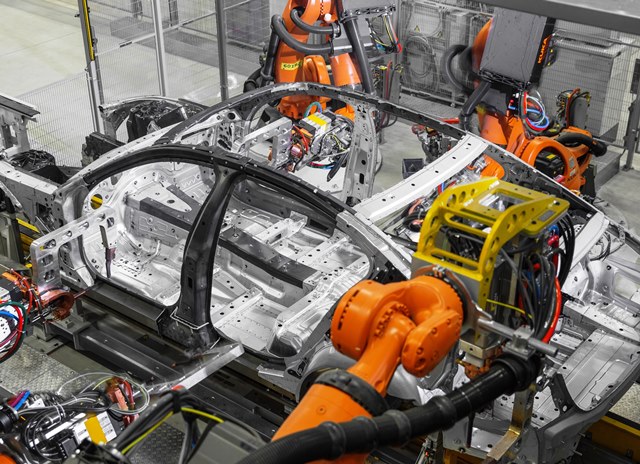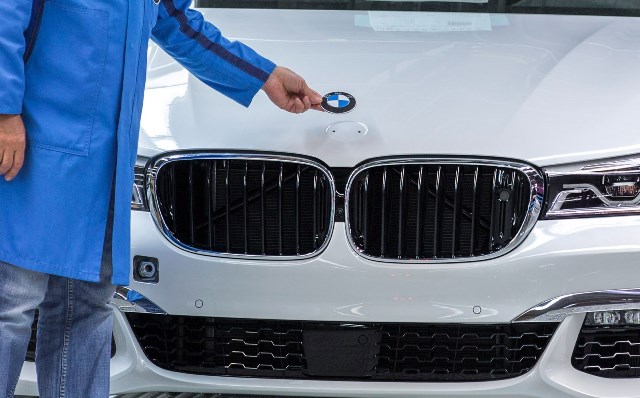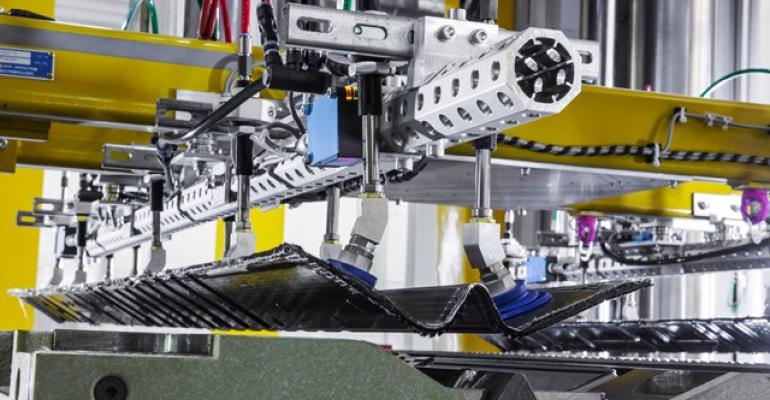DINGOLFING, Germany – Salable units of the all-new BMW 7-Series will roll off the assembly line here in less than a month, destined for ports around the world as owners start taking delivery in October.
It took two years for the plant here to tool up for the production of carbon-fiber reinforced plastic components that boost rigidity, reduce weight and lower the center of gravity of BMW’s sixth-generation flagship sedan.
As vehicle output ramps up, a former warehouse at the complex here now dedicated to CFRP production will churn out thousands of 7-Series parts daily, making it the largest carbon-fiber components plant in the world, BMW officials say.
The automaker clearly is all-in with its carbon-fiber bet, already delivering to market two groundbreaking eco-smart vehicles with CFRP passenger cells, the i3 electric vehicle and i8 plug-in hybrid.
BMW does not use autoclaves in processing carbon-fiber here for the 7-Series. Instead, the automaker uses wet pressing of carbon-fiber fabric impregnated with resin to shape the material in a 3-D mold before hardening.
The other process used here is hybrid pressing, which places sheet steel inside a mold alongside carbon-fiber fabric, again impregnated with wet resin. The materials are pressed and bonded together to form hybrid structural components, such as the B-pillar, C-pillar, door sills, rear shelf, center tunnel and roof rails, with outstanding crash performance.
The fabric is made as part of the “Carbon Core” strategy at BMW’s plant 30 minutes away in Deggendorf with carbon-fiber strands imported from the Moses Lake, WA, plant partly owned by BMW.
Carbon fiber is about 30% lighter than aluminum and 50% lighter than steel.

The automaker will not say how many carbon-fiber presses are in use in this part of the plant, which is highly automated and currently has 70 employees. By year’s end, headcount here is expected to reach 150. Three shifts keep it running 24 hours a day five days a week.
In addition to 7-Series, this plant also builds 3-, 4-, 5- and 6-Series cars, in multiple body styles, at a rate of 1,600 vehicles daily and 100 units per hour.
Without providing details, plant manager Josef Kerscher says the new manufacturing technologies established for the 7-Series also will benefit the other models as they are redesigned in the future.
Dingolfing Produced 369,027 Vehicles in 2014
Located 60 miles (97 km) northeast of Munich, this plant started vehicle production in 1973 and has been BMW’s largest and most productive assembly facility among 30 sites in 14 countries around the world.
Total headcount is 17,500 employees, including 12,000 dedicated to vehicle assembly and 800 apprentices. Bodies-in-white also are produced here for the Rolls-Royce Phantom, Ghost and Wraith, then shipped to Goodwood, U.K., for final assembly.
Output reached 369,027 units in 2014, which means nearly one in five BMW-brand vehicles worldwide came from here.
With 460 robots, the body shop is 95% automated. Exterior body panels of the new 7-Series are aluminum, as is the engine cradle; inner and outer door panels are laser welded. The trunk lid also is laser welded in three pieces.
In total, the 7-Series body consists of 500 parts and requires 427 ft. (130 m) of structural glue, 98 ft. (30m) of laser welds, 5,700 welding points, 600 rivets and 160 screws or fasteners.
The paint shop was rebuilt for 7-Series assembly to accommodate the industry’s longest electrophoretically deposited paint drying line, measuring 787 ft. (240 m). Conventional driers are half the length.
Plant officials say the line needs to be so long because the wet-on-wet paint process requires slow heating followed by gradual cooling for a more durable paint job.
It takes 14 hours to paint the new 7-Series and about 50 hours to complete vehicle assembly, including quality checks.

To reduce the inventory of parts on the plant floor, management switched to “material trains,” some of them self-driven, to haul racks of components wherever they are needed on the line.
Also for the 7-Series launch, camera gates were improved to ensure more thorough evaluations of each vehicle as it advances from station to station.
There are three camera gates, and a car spends 82 seconds in each one as 3,500 scans are performed to ensure, for instance, holes in the body are plugged and fasteners, bolts and rivets are properly placed.
The plant floor has a semi-anechoic wind chamber to conduct acoustic analysis and identify unwanted noise within the cabin while the vehicle runs at speeds up to 162 mph (260 km/h) on a full chassis dynamometer.
The quality department also includes optical and tactile measuring stations to check gaps between body panels and to watch for deviations anywhere on the body.
For the first 1½ years after a new vehicle launches, the department will sample about 100 vehicles for detailed analysis, even assessing the quality and composition of door seals from suppliers.




